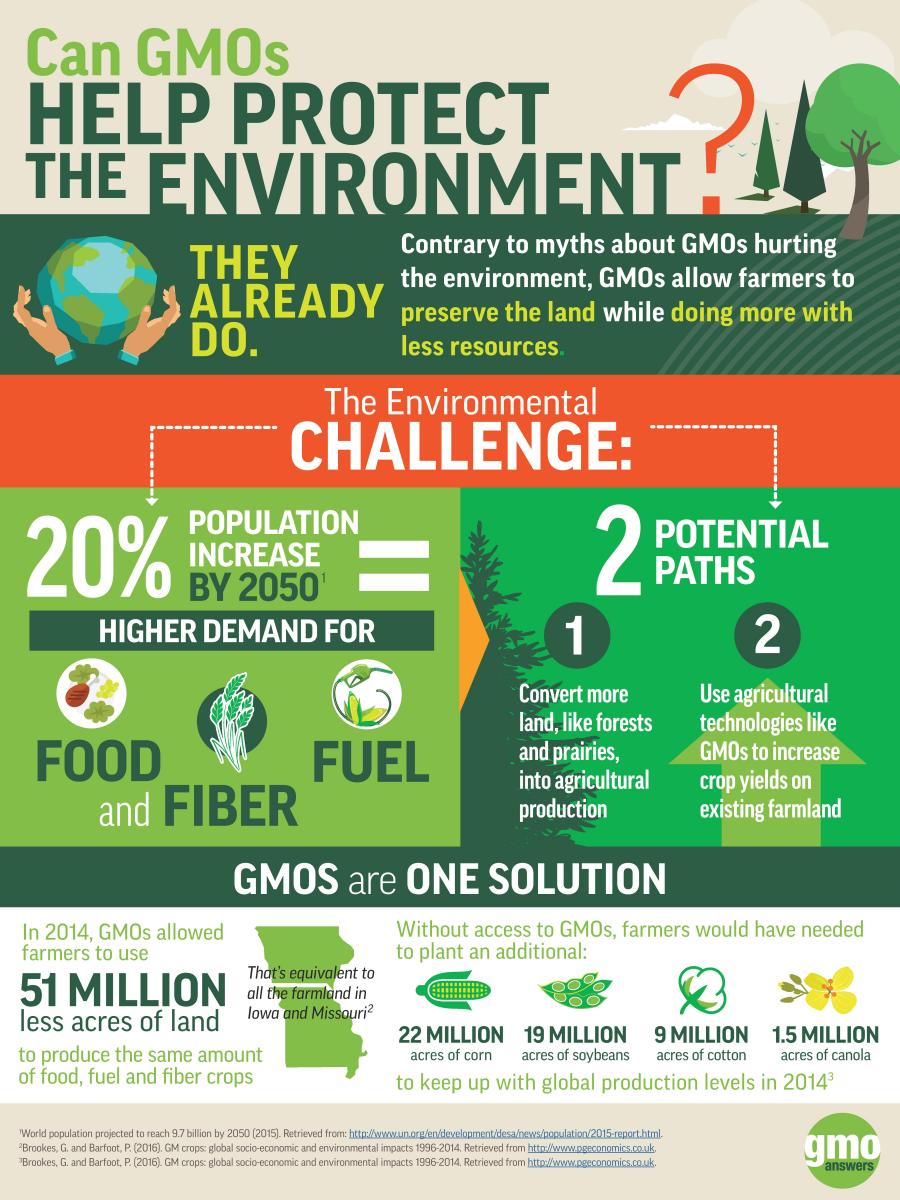How GMOs Can Help Us Do More With Less
This post was originally published on Forbes on June, 8 2016.
Post written by Kate Hall. Kate Hall is managing director of the Council for Biotechnology Information and GMO Answers spokesperson.
As we face major environmental challenges, finding solutions that improve sustainability are key – and GMOs have proven to be a part of the solution when it comes to positively impacting the environment. In honor of the United Nations’ World Environment Day, an annual platform for encouraging worldwide awareness for environmental protection, we wanted to raise awareness about how GMOs positively impact the environment. We are celebrating this year’s World Environment Day by launching the first of a series of informational infographics to show how GMOs help to conserve our resources and land.
Our series’ first infographic highlights how GMOs help protect the environment by allowing farmers to produce more crops, using less resources, which ultimately reduces agriculture’s impact on habitat destruction, while also conserving soil, water and energy.

Doing more with less is the challenge of our age, and GMOs help to address that challenge when it comes to agriculture. Last year, a United Nations Department of Economic and Social Affairs report projected a near 20 percent increase in the world’s population by 2050. The estimated global population of 9.7 billion means that farmers will need to produce much more to meet higher demand for food, fiber and fuel. There are two potential avenues to do this: we could either convert more arable land into agricultural production, or enable higher yields on existing farmland through advances in agricultural technologies such as GMOs.
Wild lands, forests, prairies and pastures are vital habitats for bees, butterflies and other wildlife and have countless human, natural and economic benefits that we all have a responsibility to protect. By improving agricultural yield, GMO crops can help protect the environment by allowing farmers to produce more food on existing farmland rather than cultivating wild lands.
GMO crops already have increased productivity on the world’s 3.7 billion acres of arable land —which has helped to prevent deforestation and conserve biodiversity.
A recent study published by PG Economics showed that GMOs reduce pressure on land resources while contributing to greater global food security by increasing yields:
- In 2014, if GMO crops had not been available, farmers would have needed to cultivate 51 million more acres of land to produce the same amount of corn, soybeans, cotton and canola. That’s equivalent to all of the farmland in Iowa and Missouri – 12 percent of the arable land in the U.S.
- From 1996 to 2014, crop biotechnology was responsible for increasing global production of soybeans by almost 175 million tons, corn by almost 355 million tons, cotton by 27 million tons and canola by 10 million tons.
Another study, published in the journal PLOS One, found that by growing GMO crops, farmers have increased crop yields by 22 percent.
As we continue to work towards solutions to help address the increased agricultural demands of a growing global population while protecting the natural environment, it’s important to recognize the environmental benefits that GMOs have made and will continue to make. At GMO Answers, our goal is to help the public better understand how GMOs can be one tool to help increase sustainability in agriculture and to protect the environment.